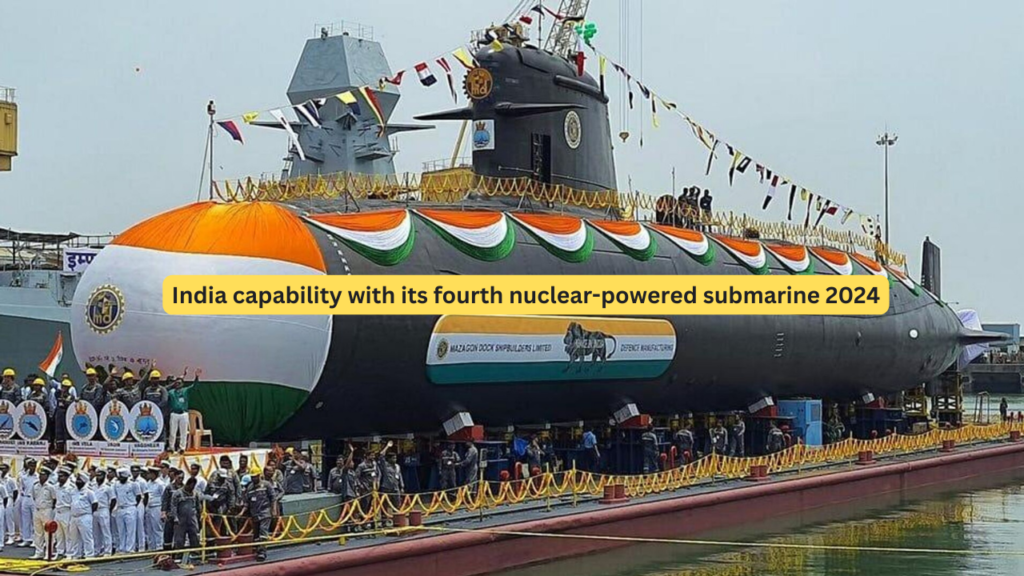Well, correctly said, the development for India saw the commissioning of the fourth nuclear-powered ballistic missile submarine, SSBN, giving an added strength to its strategic defense posture. Such enhancement in the capability of the Indian Navy would indeed make all the difference to the second strike capability, which incidentally forms a major constituent part of India’s nuclear triad. Advancements in underwater nuclear deterrent help retain a country’s robust security infrastructure in the warming climate of ever-changing defense landscapes around the world, especially in the Indo-Pacific region.

Improving the Nuclear Triad
The nuclear triad forms a constitutive part to any country’s defensive strategy which consists of land-based ballistic missiles, air-launched nuclear weapons, and SLBMs. Further insurmountable strengths of the nuclear triad are their ability to retaliate against a nuclear attack from multiple platforms, ensuring that retaliatory capabilities are always retained regardless of which leg of the triad may have been compromised. In this regard, SSBNs form the most survivable leg of the nuclear triad given their stealth and mobility characteristics, which makes them harder to detect.
The new fourth SSBN further enhances this deterrence. With that nuclear-tipped ballistic missiles, it can provide an effective second strike in the whole flexi-force system, wherein capabilities for retaliation are retained even in the worst-case scenario of an adversary’s nuclear first strike.
Table of Contents
Key Details and Capabilities
Even though the actual specifications of this new SSBN are classified on national security grounds, it is known that this submarine would be able to carry nuclear-capable ballistic missiles. This is believed to have over 3,500 kilometers in range and thus capable of hitting distant targets. That is therefore critical as the geopolitical landscape becomes more competitive in the Indo-Pacific region.
The Arihant-class submarine, which this is, will be one of India’s indigenously-built SSBNs, it will be given a pride of place in the line. The Arihant-class submarines are designed to stay underwater for long periods; hence, it cannot be tracked, and a strike can be launched at any given time. Such underwater launching of missiles would ensure that the second-strike capability is not lost in the case of India.
Indigenous Development: Strategic Importance
The SSBN fits well with the commitment of India to indigeneity in defense manufacturing, most in keeping with the “Make in India” vision. By virtue of managing to reduce foreign dependence on imported defense articles, indigenous development enhances a more potent and capable defense industrial base. Most critically in such respect, this is indeed for nuclear-powered submarines-the apogee of naval engineering as also strategic military capability.
The commissioning of the fourth SSBN only enhances India’s strategic weight in the Indo-Pacific. At a time when, except for a few other nations, India is one of the only countries whose operational nuclear triad challenges its potential adversaries, India now has an even more robust capability to deter potential antagonists against a backdrop of heightened tensions at the regional security end. This submarine capability will enable India to project power throughout the Indo-Pacific, guard its borders, and protect its economic assets.
Regional and Global Implications
This SSBN is coming at a period of heightened strategic competition quite especially with neighboring country China. The latter has been gradually increasing its military presence in the South China Sea and further beyond the region’s balance of power. In this context, the new Indian SSBN has seriously improved its deterrence position and acted as a strategic counterbalance against China’s influence in the Indo-Pacific. The message is conveyed with clarity that India is well-equipped to preserve its sovereignty and meet its security commitment in the region.
With the present proliferation rate of the SSBN fleet, this further cements India’s position in the world as a responsible nuclear nation. Being a member of that exclusive league of the SSBN, like the others such as the United States, Russia, and China, with a fully functionally triad nuclear, puts India square at the forefront of regional stability and in turn larger global security as it navigates through challenges precipitated by nuclear proliferation.
Conclusion
indian defense modernization with fourth nuclear-powered ballistic missile submarine is a critical step. By enlarging its nuclear triad, India does not merely secure its strategic deterrent but prepares itself for the types of challenges that would face security. The new SSBN would further help in enhancing second-strike capability because second-strike capability would enable its effective usage of nuclear weapons at times of expected nuclear retaliation or devastating retaliation on the part of India, which makes it a responsible nuclear power and yet brings about peace and stability in an increasingly complex geo-political environment.
India continues to play a more assertive role in regional security by safeguarding all its interest in the Indo-Pacific and much further with this development in the SSBN fleet. In this sense, it forms a milestone for India’s self-reliance, technological advancement, and global security.
Visit To More Information

